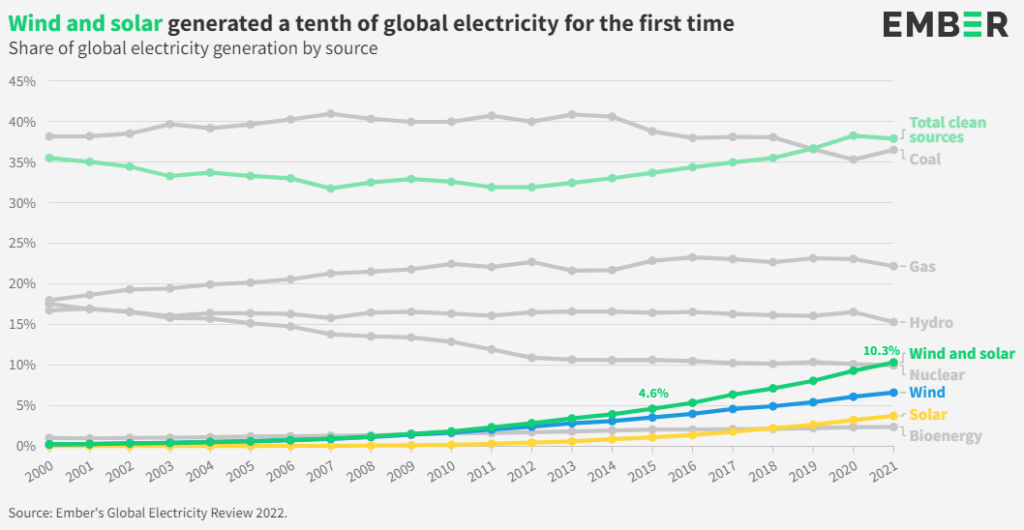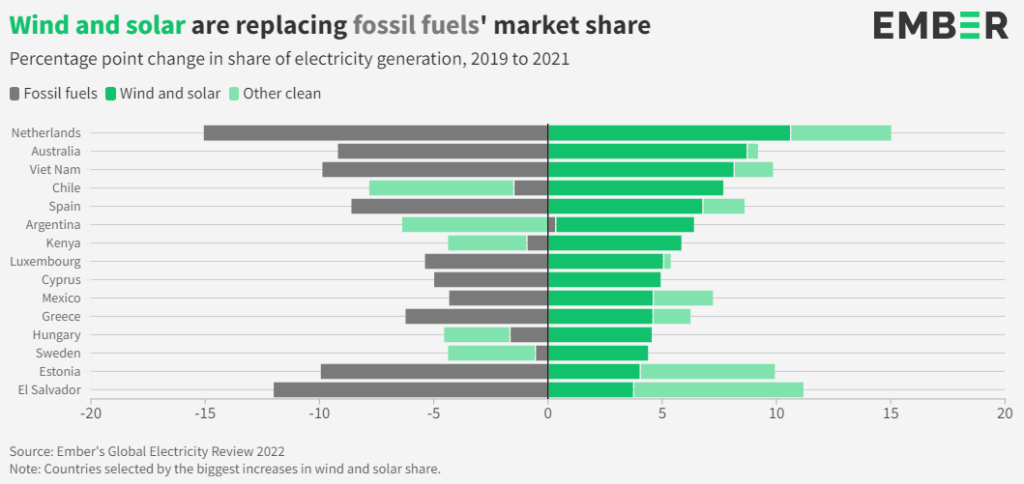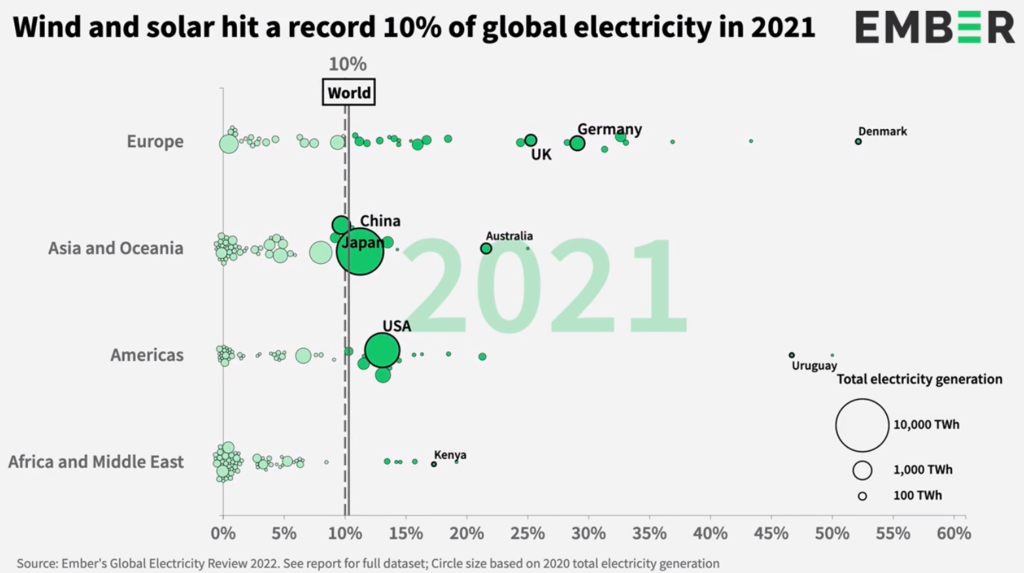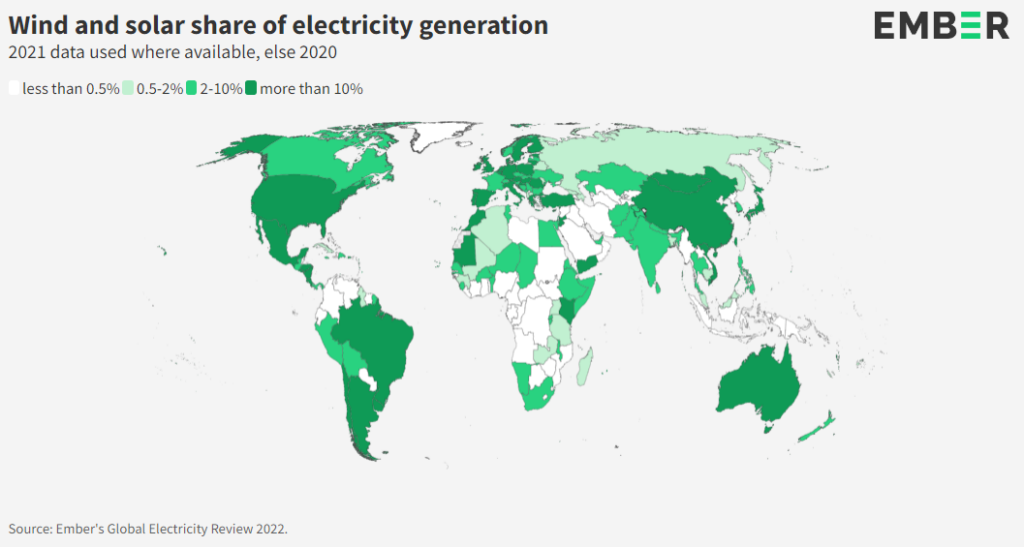Wind and solar’s share of global electricity production has surpassed 10% for the first time, as China and Japan join 50 different countries in surpassing that level by 2021.
The new assessment, by UK-based Ember, says wind and solar are the fastest-growing sources of electricity, and if maintained at the current rate could provide enough capacity to help limit average global warming to 1.5°C.

The problem is that, in the last year, fossil fuel production and emissions have also soared after a hiatus caused by the COVID-19 pandemic, and more coal is being burned because gas has become too expensive.

“Wind and solar have arrived. The process that will reshape the current energy system has begun,” says David Jones, lead author of Ember’s third Annual World Electricity Report.
Jones says solar generation increased 23% last year, and wind 14%, bringing combined output to 10.3% of global electricity generation, up from 9.3% the previous year, and double the 4.6% in 2015, when the Paris climate treaty was agreed.

All clean electricity sources, including nuclear (10.1%) and hydro (15.3%), generated 38% of global electricity in 2021, which was more than coal (36%), despite coal experiencing the biggest annual jump since 1985, reaching a new record high.
“To be on a path to keep global warming at 1.5 degrees, wind and solar need to maintain high compound growth rates of 20% each year through 2030. That’s the same growth rate as their average over the past decade,” Jones says.
You may also be interested in: Cement and Steel: Nine Steps Toward Net Zero
Increasing Changes
The countries leading the shift to wind and solar are Denmark, Uruguay and Luxembourg, which achieved shares of 52%, 47% and 43% respectively.
“With 50 individual countries already generating more than 10% of their electricity from these rapidly deployed resources, and three countries already generating more than 40%, it is already clear that these technologies are delivering results.”

“But as coal continues to rise and electricity demand continues to increase, all governments with carbon-intensive grids now need to act with that same boldness and ambition,” Jones emphasizes.
Australia also gets an honorable mention for being one of three countries, along with the Netherlands and Vietnam, that have shifted more than 8% of their total electricity demand from fossil fuels to wind and solar in just the last two years.
Countries that achieved a 10% share of wind and solar in their local grids last year include China, Japan, Mongolia, Vietnam, Argentina, Hungary and El Salvador.
“More wind and solar power is being added to the grids than ever before. And not just in a few countries, but all over the world. They can provide most of the clean electricity needed to eliminate all fossil fuels, while helping to increase energy security,” Jones said.
But with gas prices remaining high amid Russia’s war with Ukraine, there is a real risk of falling back on coal, threatening the global climate goal.
To access Ember’s report, click here




